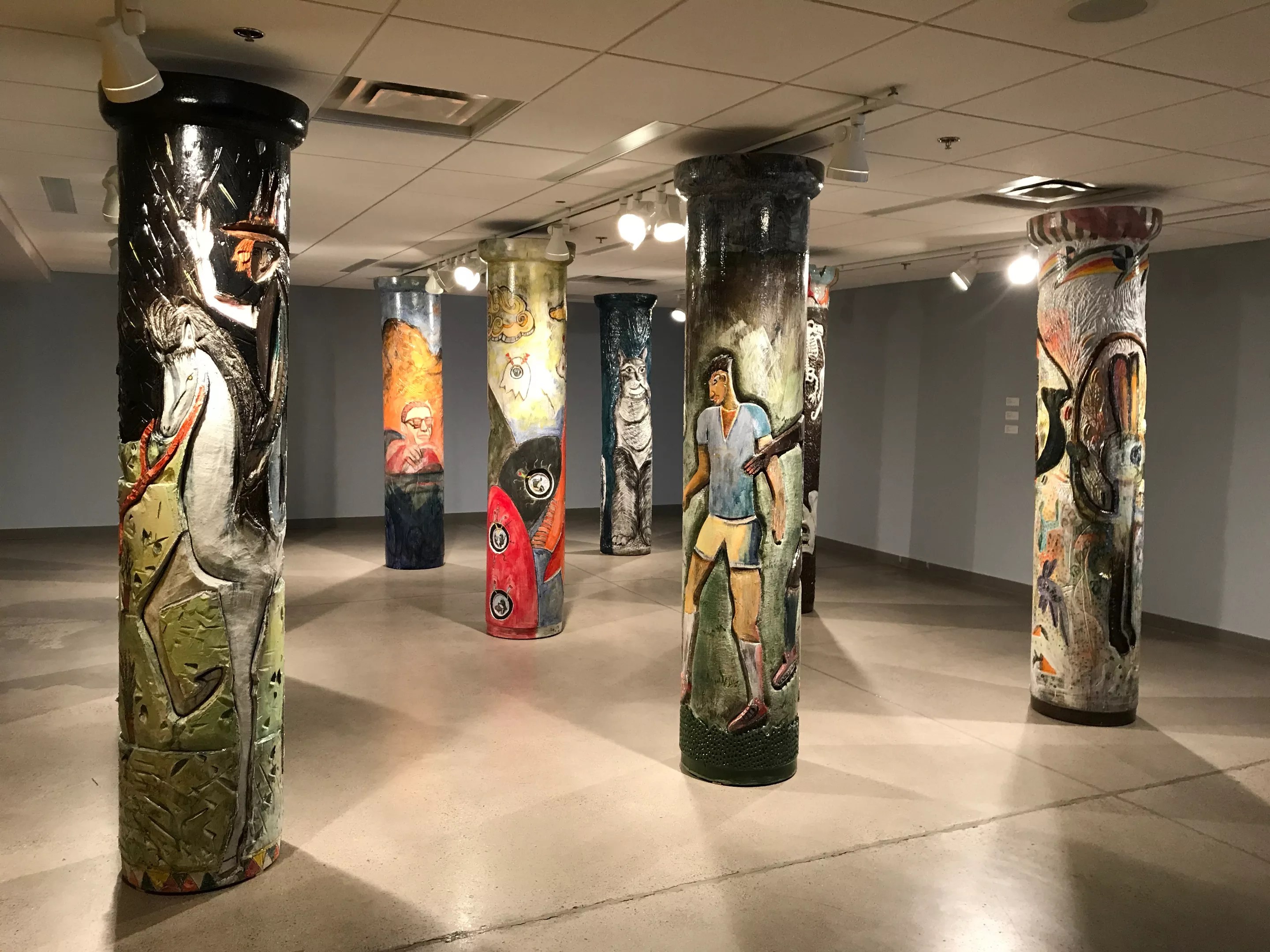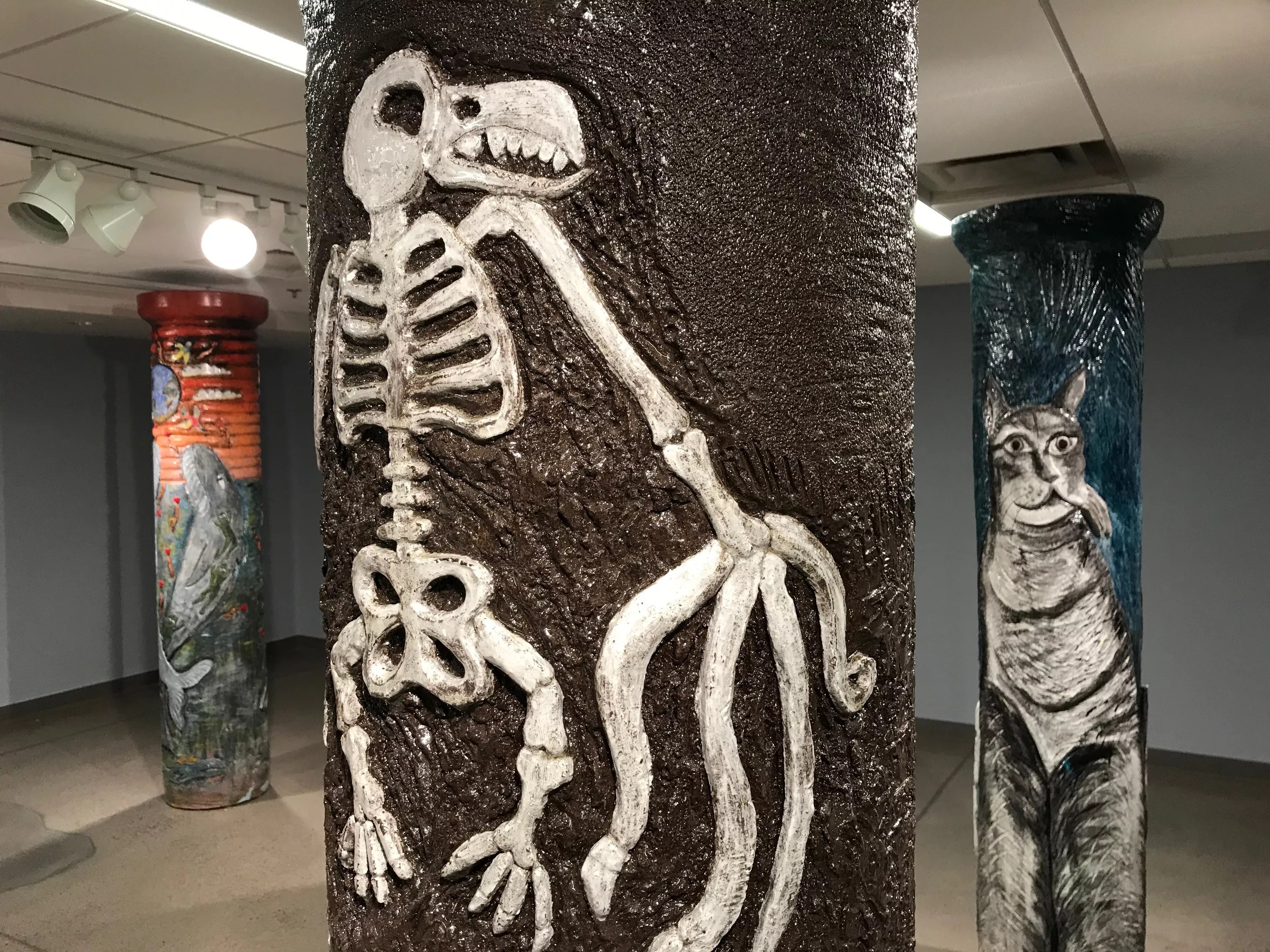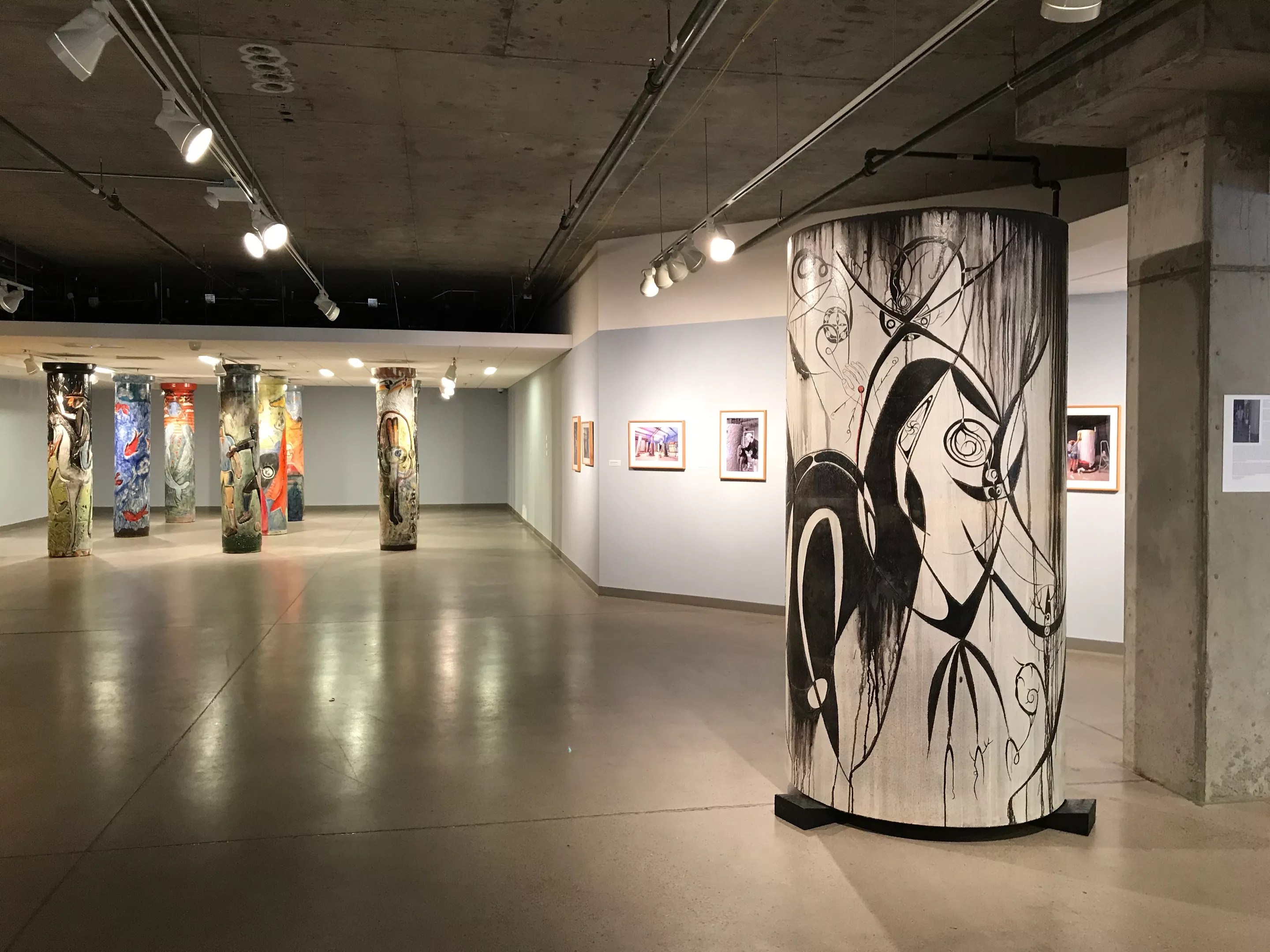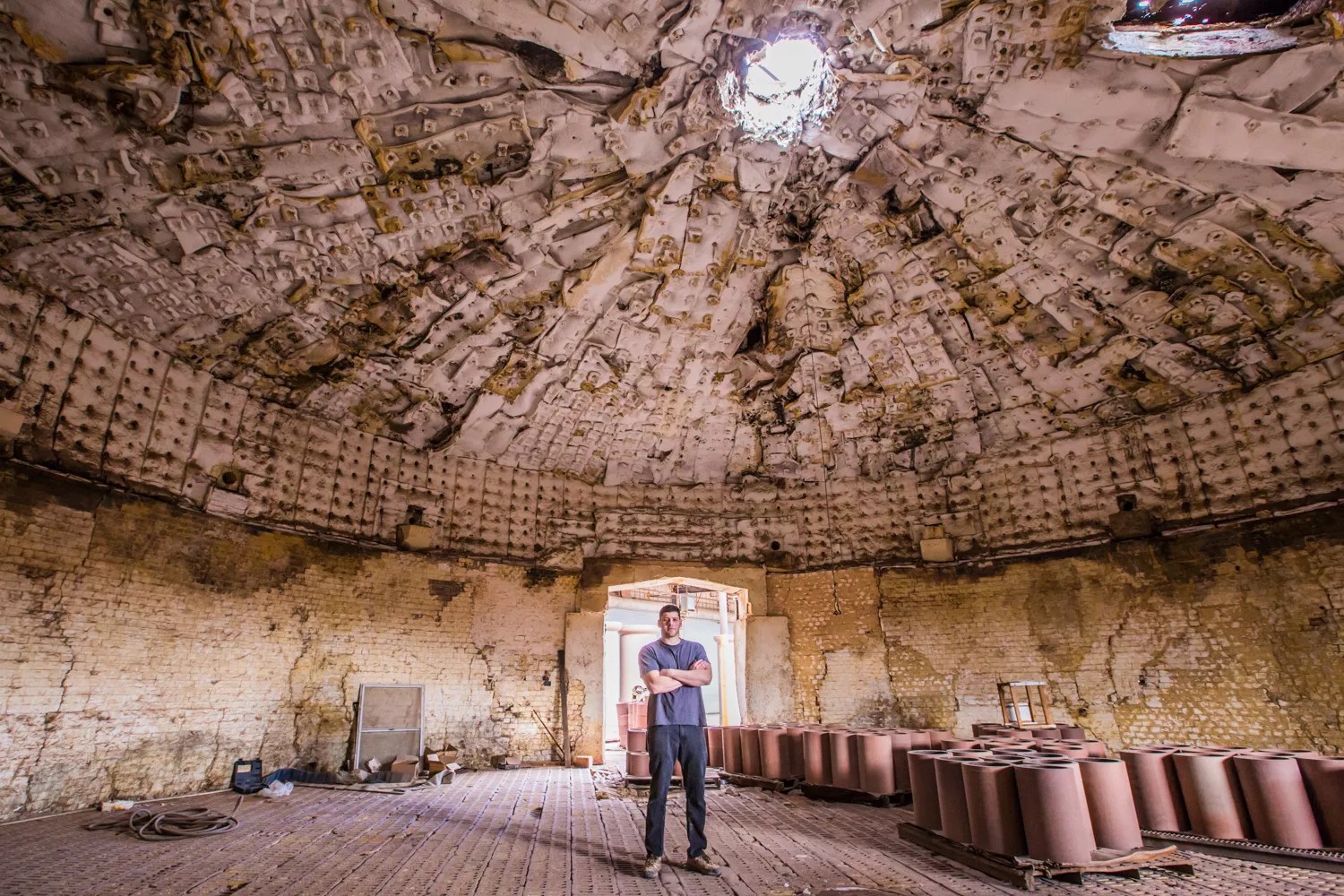
Lynn Trimble

Audio By Carbonatix
Nine sewer pipes stand like columns inside the ASU Art Museum’s Ceramics Research Center. Created with vitrified clay, they’ve been transformed into art objects. Each pipe measures about 7 1/2 feet tall.
The work is part of “Pipe Brothers: Tom and James Franco,” which continues in Tempe through Saturday, September 23.
The artists are brothers from a family filled with creatives.
Tom is an Oakland, California-based visual artist working primarily in sculpture, painting, and illustration. James is the well-known actor, whose other pursuits include filmmaking, creative writing, and art.
This year, make your gift count –
Invest in local news that matters.
Our work is funded by readers like you who make voluntary gifts because they value our work and want to see it continue. Make a contribution today to help us reach our $30,000 goal!
Their work is central to the exhibition, but four other artists have work in the show. So four additional columns, which vary in size, dot other parts of the gallery space.
Although the Franco brothers’ artwork isn’t all that impressive, the show does have redeeming qualities.
For Garth Johnson, who curated the exhibition, it’s a way to introduce people to the wider world of ceramics beyond coffee cups and vases. Johnson is curator of ceramics for the ASU Ceramics Research Center.
There’s a big novelty factor at play, which helps draw curious visitors during summer months.
Seeing sewer pipes upended like columns is rare. And most museum exhibitions don’t include work by celebrities.
Star power meets sewer pipes – that’s the crux of this show.
But there’s nothing compelling about what the brothers have created here, in terms of aesthetics.
Instead, their work for “Pipe Brothers” is a big dose of boring.
The columns are carved and glazed, primarily with images of people, animals, and plants. Like much of Tom’s work, they look more like children’s drawings than sophisticated artworks.
It’s a style that works better in Tom’s larger body of work, which includes sculptures created with found objects such as shoes, tin cans, and chairs. For an artist whose best work involves cobbling together and manipulating diverse materials, a clay pipe isn’t the best jumping-off point.
And clay pipes aren’t the typical stuff of James’ artwork, which has included video of below-the-waist bodily functions that typically occur over a functional porcelain pot. He’s worked in several media, including painting, photography, and performance – often earning harsh praise from art critics.
By comparison, these artworks are downright docile.

Designs by Tom (center) and James (right) Franco featured in the “Pipe Brothers” exhibition.
Lynn Trimble
Taken together, the Franco brothers’ nine pipes celebrate the Earth’s ecology.
The most interesting piece, titled Dinosaur Bones, depicts fossils lodged in the earth. A row of shoes circles the column near the top, prompting viewers to reflect on what lies beneath as they traverse modern-day sidewalks.
The tar-colored soil that envelops the dinosaurs is heavily texturized, and small triangles have been cut from the column’s top rim.
But other columns, especially the pair attributed to James, lack that attention to detail.
On one, there’s a black cat standing on hind legs that look like they’ve been plucked from a massive elephant. On the other, there’s an image of James, as James Dean, behind the wheel of a convertible. It’s a reference to his starring role in a 2001 biopic about Dean.
Although James didn’t travel to Arizona to work with the physical materials in the show, he was part of the collaborative process at the heart of the show.
“James conceptualized and created the pieces using sketches, and they were executed by his brother and artists from Firehouse Art Collective,” Johnson says of those two works. That’s the artist collective Tom founded and heads in Berkeley, California.
Despite the so-so quality of the brothers’ artwork, the exhibition isn’t without merit.

Synchronicity by John Toki (right).
Lynn Trimble
“Pipe Brothers” also includes clay pipes by four additional artists. They’re the real stars of this show.
Most compelling is John Toki’s Synchronicity, a 2011 work that weighs 3,000 pounds and had to be placed just so to avoid crashing through the floor into a subterranean parking lot below the museum.
Toki uses the pipe as the canvas for a delicate but complex abstract painting of twists on familiar images such as the human hand.
Artist David Kuraoka (Untitled, 2015) stacked discs to form a column, using a repeating geometric pattern of black and white with touches of red. Don Reitz (Untitled, 2009) created visual vignettes using forms that protrude from his column. And Patrick Siler (Country Boys Meet the Bossy Barista, 2016) painted a coffee shop in chaos.
These variations in manipulation of materials and surface treatments give the show some otherwise lacking complexity. More of this, and fewer works by the Francos, could have elevated the show to another level.

Inside the kiln at Mission Clay Products in Phoenix.
Alex Diana/Metric Cosmetics
Fortunately, there’s another reason this show is worth seeing.
“Pipe Brothers” is an effective tool for introducing museumgoers to a little-known local resource called Mission Clay Products.
The company has several locations, including the south Phoenix factory where the sewer pipes used in the show were made. That’s where the actual carving, glazing, and firing took place.
It turns out that they’ve had many artists work with their materials, through a program called Mission Clay Arts and Industry, which has been around for three decades.
The exhibition also includes several photographs taken at the Phoenix factory, including a couple that show Tom Franco working with other members of the creative team.

Installation shot for “Pipe Brothers: Tom and James Franco.”
Courtesy of ASU Art Museum Ceramics Research Center
There’s a video as well, showing on a screen mounted near the nine-column Franco brothers’ installation. It’s a fascinating behind-the-scenes look at the local clay factory, but also features footage of Tom exploring the desert.
The video is still a work in progress, Johnson says. And that’s a good thing, because the video comes across as a poorly disguised ad for James’ Elysium Bandini Studios, which charges viewers for curated online cultural content.
It’s just one more misstep for the exhibition.
The cult of celebrity may be what draws people to the show. But it’s the other artists in the room who deserve top billing.
“Pipe Brothers: Tom and James Franco” continues through Saturday, September 23, at ASU Art Museum Ceramics Research Center. Find more information on the ASU Art Museum website.